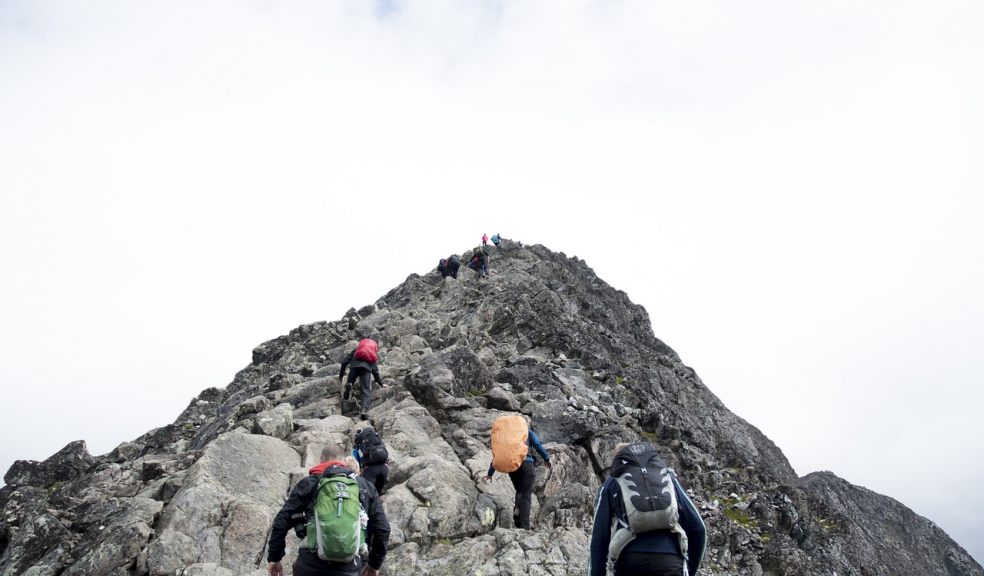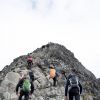
Tips on successful mountaineering
Mountaineering is one of the most adventurous type of climbing that is not only exhilarating but life changing. This pursuit should not be undertaken without a good understanding of the many different aspects involved ranging from physical fitness, map reading, navigation skills, understanding mountain weather amongst others. This hence requires a lot of stamina, skills and climbing equipment in order to safely climb up a mountain and get back down.
A point to note is that mountain climbing is not for everyone. This exercise pushes the body to face some fitness battles that one needs to be prepared for. Let’s take a look at some tips for successful mountaineering;
START WORKING OUT NOW
Mountaineering is a vigorous activity that takes a lot of physical strength and conditioning. One must start getting fit way before going for a climb to ensure endurance. For instance, one must be physically fit to carry their own backpack over great heights and altitudes. Running, cycling and swimming are good ways to prepare your cardiovascular system in preparation for the climb.
In case of any health issues, one should consult the doctor before undertaking a climb. If you have not been physically active lately, it is recommended that one starts regular exercise for a couple of weeks before the trail.
MUST-HAVE GEAR
A backpack is a must have for a climber with its weight evenly distributed and large enough to include essentials such as food, camping supplies depending on the length of your trip and clothing layers. At the most basic level, clothing layers should include a top and bottom base layer, a fleece, a waterproof outer layer, warm socks and gloves.
Depending on the weather conditions, one could also carry a hat, gaiters, scarf, sunglasses and climbing rope. Make sure to invest in a good pair of sturdy mountaineering boots with ankle support. Mammut climbing equipment should be a one stop shop for all of your technical equipment for the climbing portions.
KNOW BEFORE YOU GO
If one is new to mountaineering, one way to jump right into the sport is to hire a guided service. However, for solo travelers it’s important to plan, investigate and plot your mountain climbing course before climb day. Evaluate how many inclines the route includes and exactly how high they go. It is also important to know how long the whole trip might last.
While taking the climb, one must give themselves time to acclimate to different elevation levels as you go up. As one reaches higher elevations, the air becomes thinner making breathing difficult and by preparing for high altitudes the body adapts to the change.
WEATHER WATCHING
Mountains can be inhospitable and dangerous places for the ill prepared climber. From one hour to the next, they can exhibit a dramatic variation in the weather conditions. It can be sunny and pleasant now and stormy and rainy the next minute.
Whether it's a well-planned climb or a spur of the moment, it is important to check the weather forecast. You can always postpone a summit attempt for another day with a more favorable weather condition. The sad bit is that once you are on a mountaineering route, you have little to no options for retreat so checking the weather in advance is a must.
STAY SAFE
Some accidents and injuries occur while mountaineering because people simply underestimate the awesome forces of mountain weather. Always be careful and attentive every step of the way because one slight slip could be fatal. When experiencing fatigue or loss of breath, take a pause and relax until you feel perfectly ready to continue.
If someone in the group falls ill, becomes injured or the conditions downgrade to an unsafe level, there is no shame in turning back. Continuing not only puts everyone at risk but also puts the potential rescuers in an unsafe scenario as well.
ACTIONS FOR AN EMERGENCY
In case of a mountaineering emergency, do not rush but rather try to remain calm. Otherwise, a minor mishap could escalate into a major incident. Quickly assess the casualty’s condition and determine if they can be treated on the spot or if external assistance is required. Never leave a casualty unattended unless it is completely unavoidable. Never move far from your route as this is where mountain rescue teams will focus their search. If you need to find shelter then leave a sign indicating your direction to the rescue team.














